
A lion shakes his mane.

Early in the morning, it is still dark, when the Belgian students drive into National Park with PhD student Luka Narisha Meru.
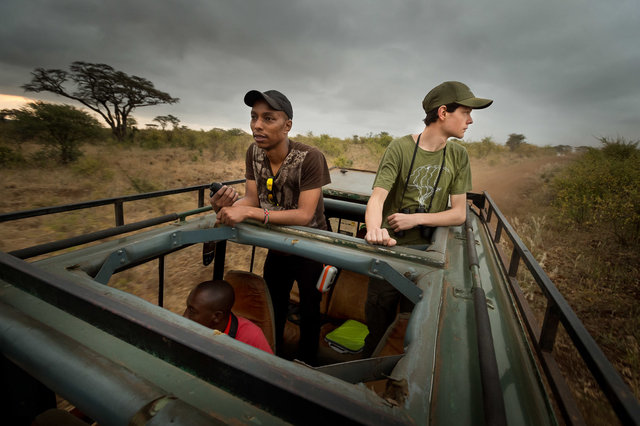
The Kenyan student Kennedy Kariuki and the Belgian student Mateo Bal scan the area in Meru National Park.
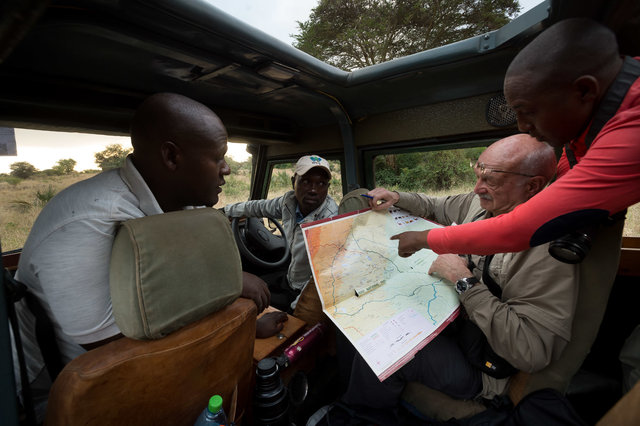
Together with professor Hans de Iongh they put out the 'transects'. These are stretches of land in the park where the students will carry out counts over the next three months.
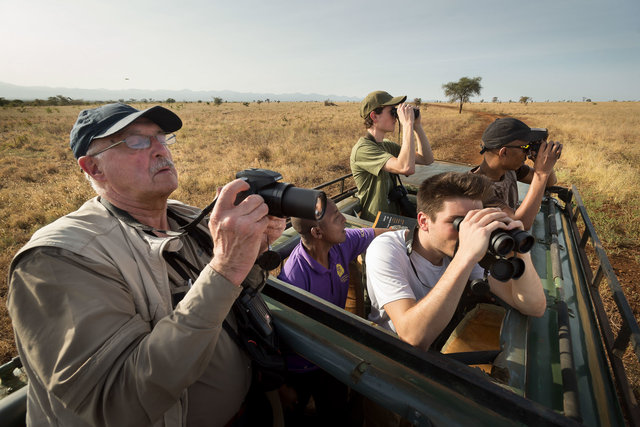
Elephants, zebras, giraffes, rhinos, lions: the numbers of all species are accurately recorded.
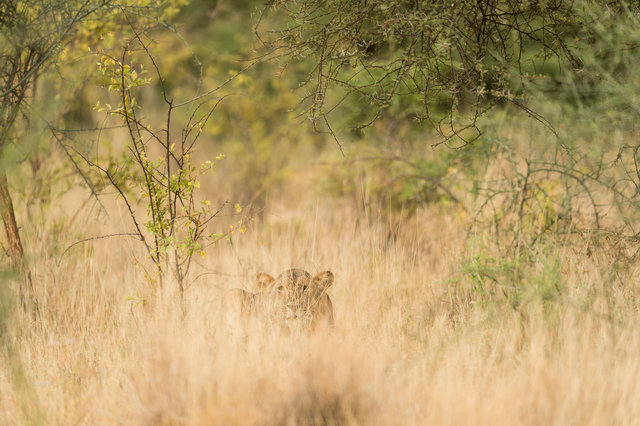
A liones hides in the high grass.
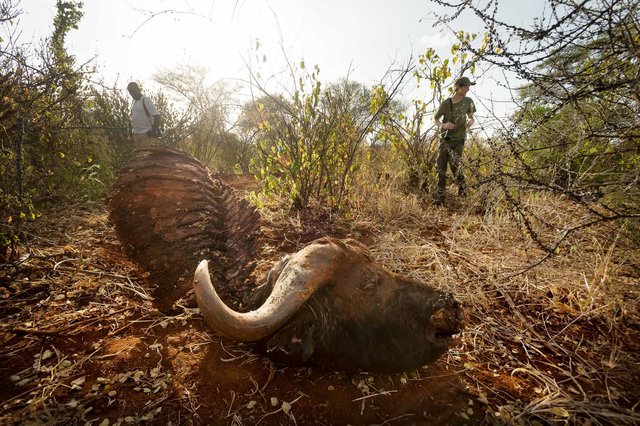
The carcass of a buffalo appears to have been almost eaten bare. It could be one or two days old.
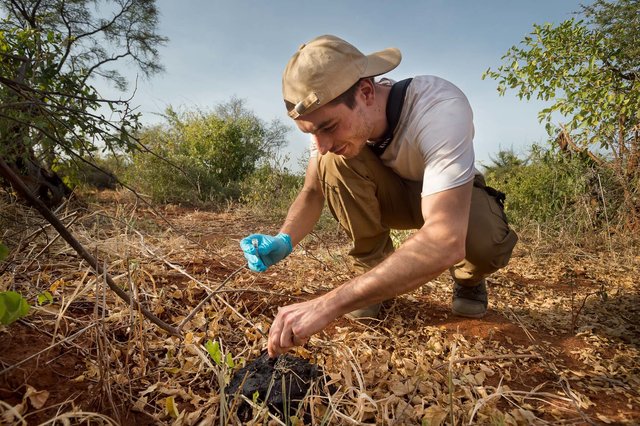
Belgian student Gert-Jan Goeminne finds what he came for: scat or lion poop. Samples are taken from the inside and outside of the scat and put in ampoules with ethanol for later research.
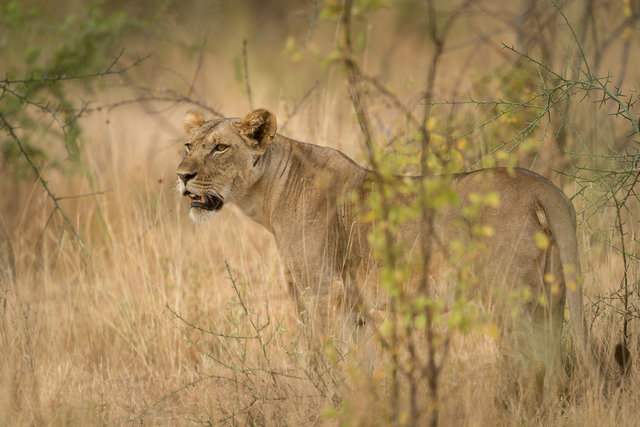
A liones in Meru NP.
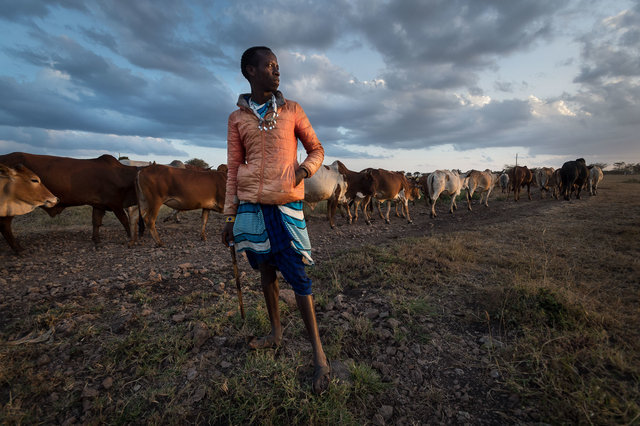
A boy herds is cows at the border of Nairobi NP.

Evening falls over Nairobi NP when Nickson Parmisa, chairman of the local Masai committee, leads his sheep and goats into the safe boma.
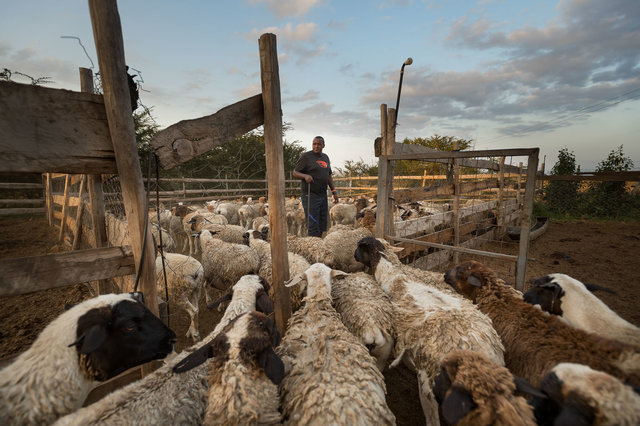
Nickson Parmisa, between his sheep and goats in the safe boma. Above the fence the flashlight sticks out.
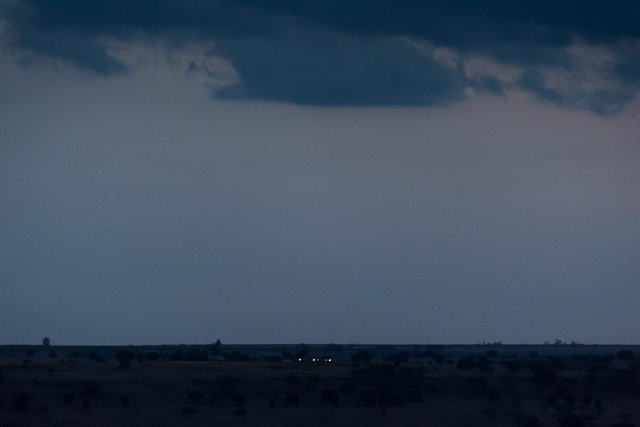
At night the lights of the boma flashes over Nairobi NP.
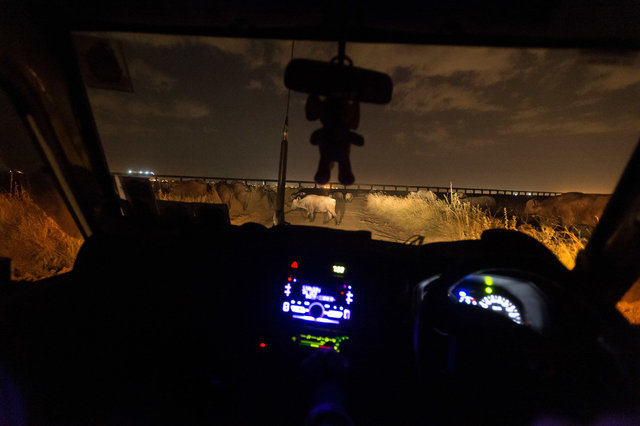
groups of buffaloes at night in Nairobi NP.
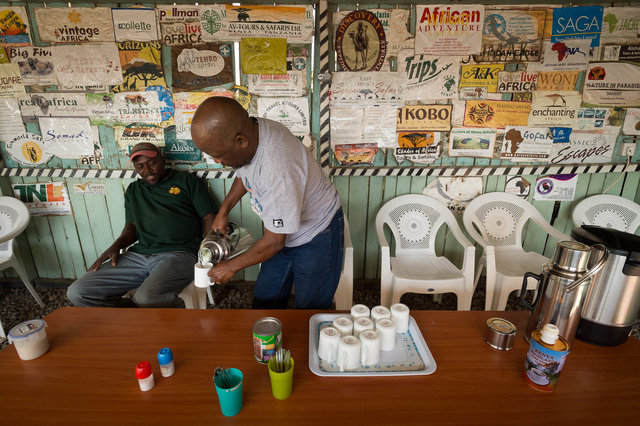
income for the population from tourism, endless posters advertising safaries.
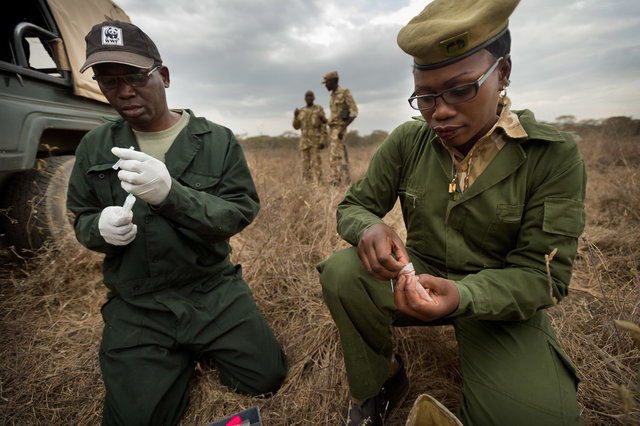
veterinarian Titus Kaitho from Kenia Wildlife Service, prepares the anaesthetic.
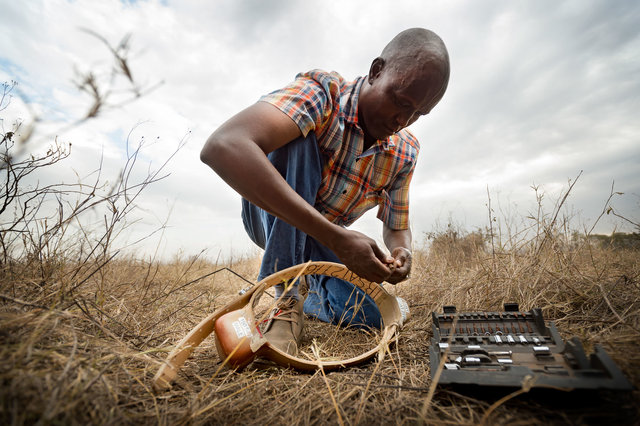
PhD student Francis Lesilau from Kenia Wildlife Service is working on the collar.
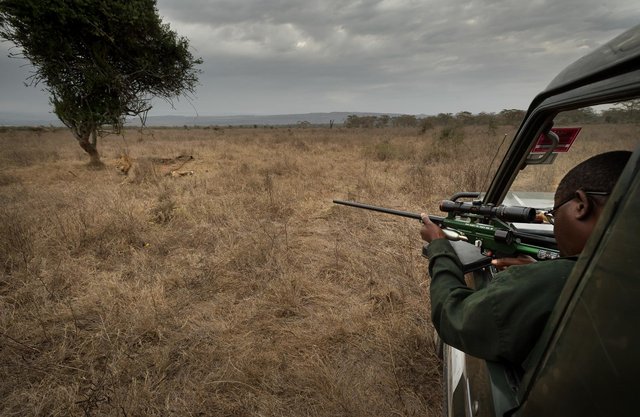
KWS veterinarian Titus Kaitho carefully drives towards them, puts on his anesthetic rifle and shoots.
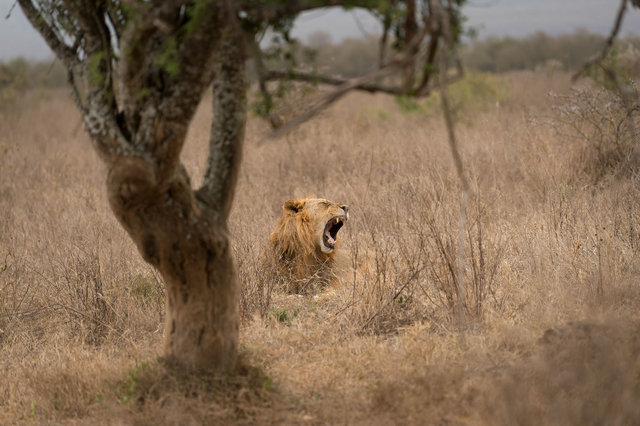
With his mouth he pulls the arrow out but the sedative is already working, slowly he falls asleep.
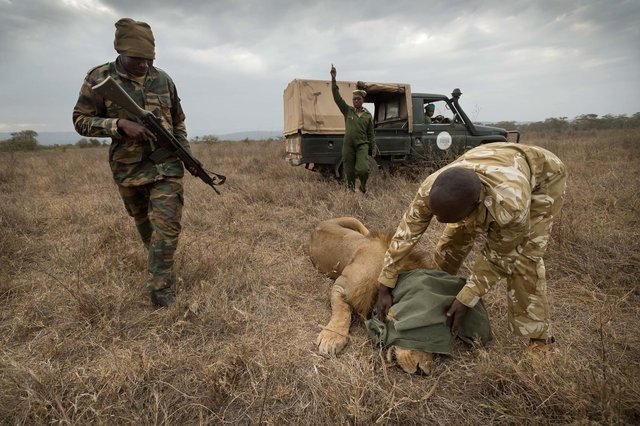
The rangers check if the lion is sedated.
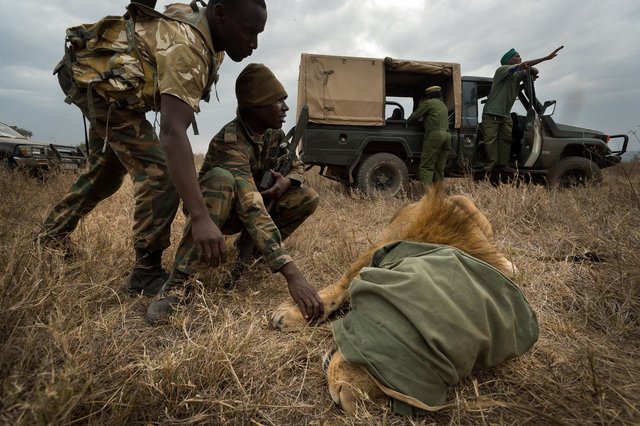
They signal: its safe.
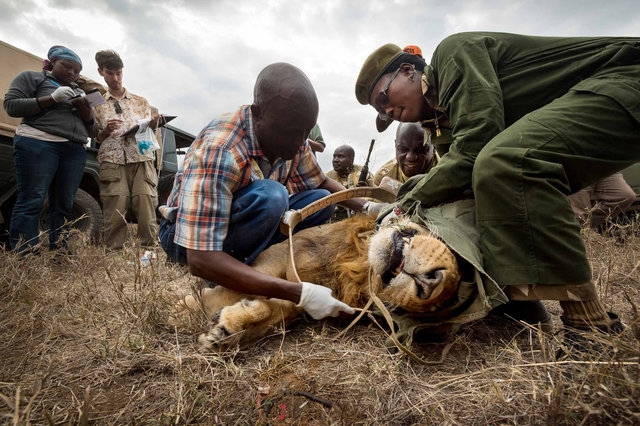
One of the rangers lifts the massive head of the sleeping animal so Francis Lesilau can put on the collar.
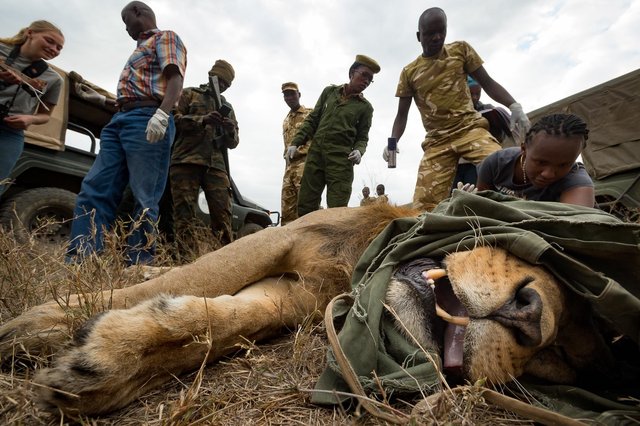
Monica Chege of KWS tighten the nuts and bolts of the transmitter.
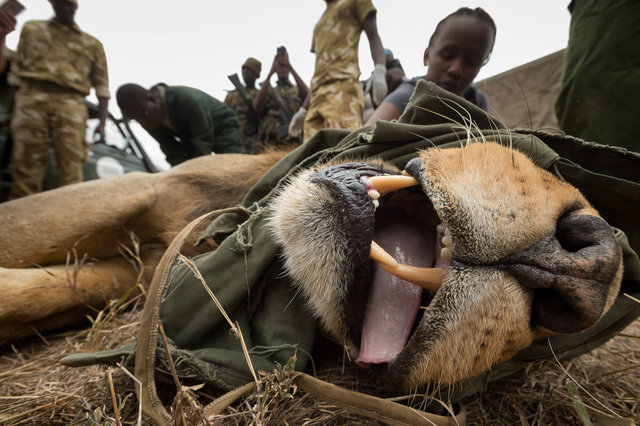
Monica Chege of KWS tighten the nuts and bolts of the transmitter.
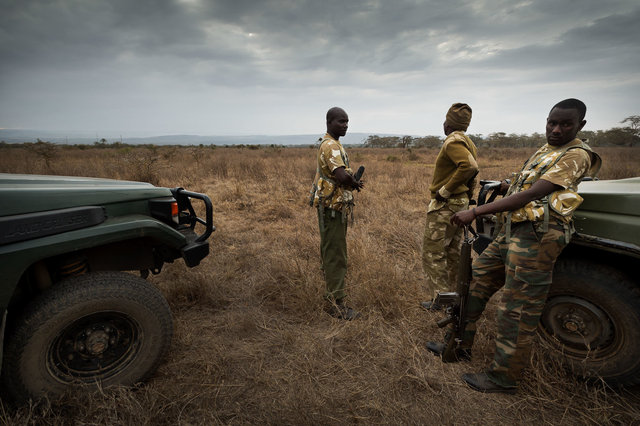
Armed rangers stand on guard to keep an eye on the second lion.
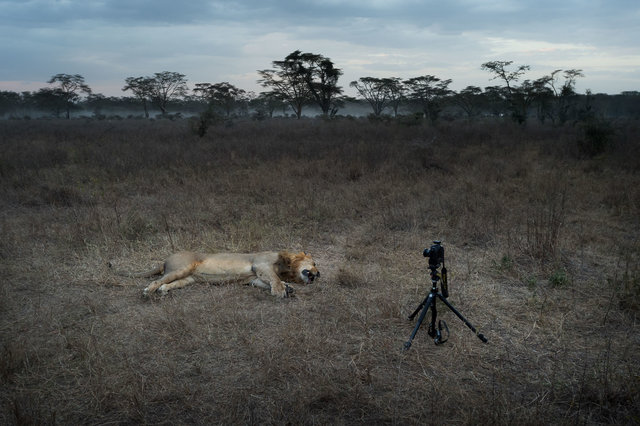
The camera with remote control in front of the sedated lion.
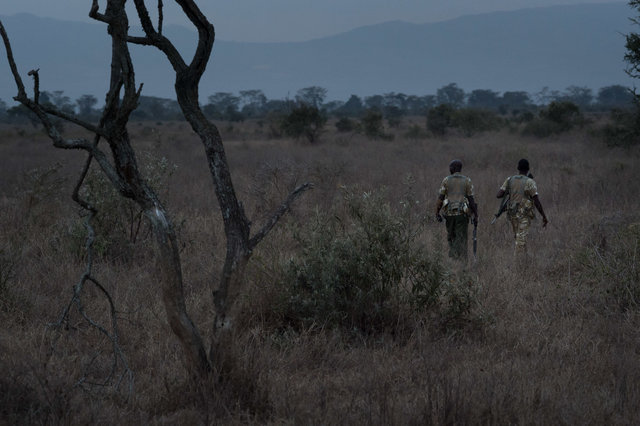
Rangers on foot patrol keep an eye on the surroundings.
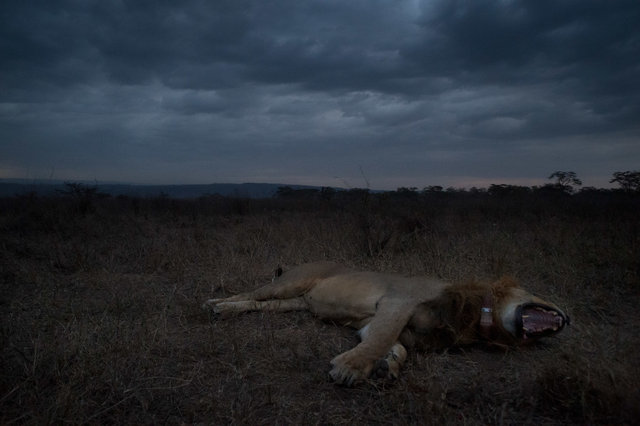
The lion is in no hurry to wake up, he lifts his head a few times but then plumps down again to continue sleeping.
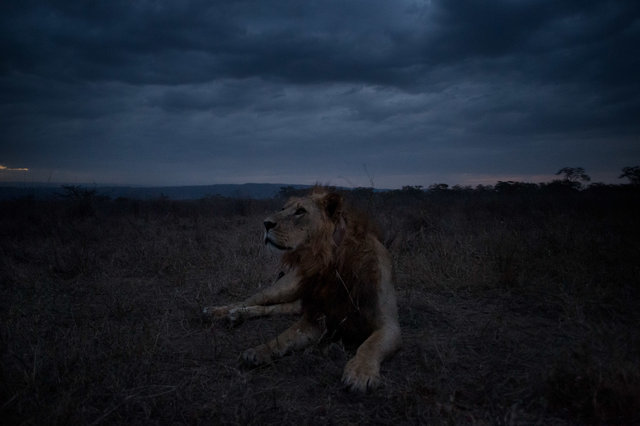
It is dark when the lion finally gets up.
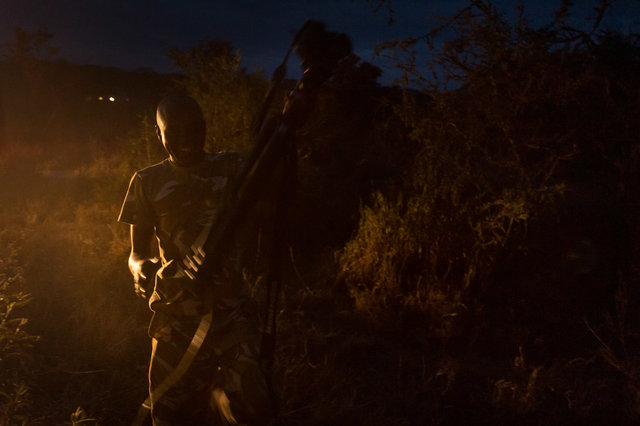
Quickly a ranger gets out of the car and grabs the camera out of the bushes grinning broadly.
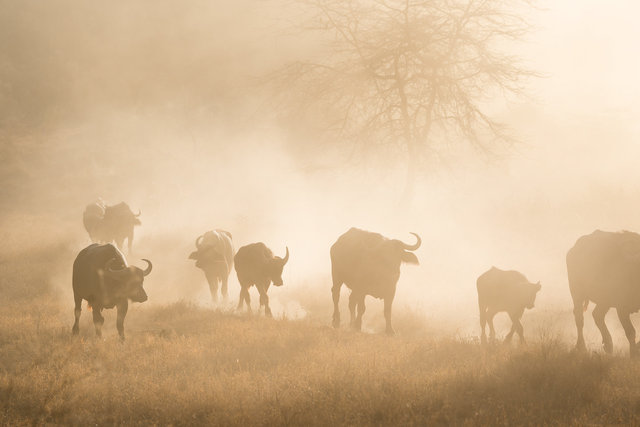
The number of buffalo might be a reason for the declining amounts of lions in Nakuru NP. Research might reveal that.

Francis Lesilau inspecting a kill.
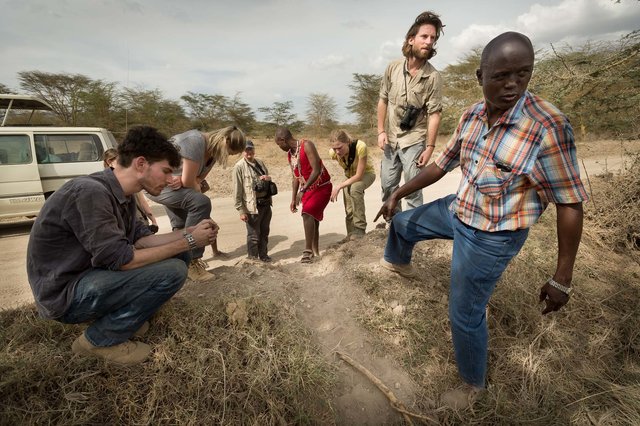
Search for footprints.
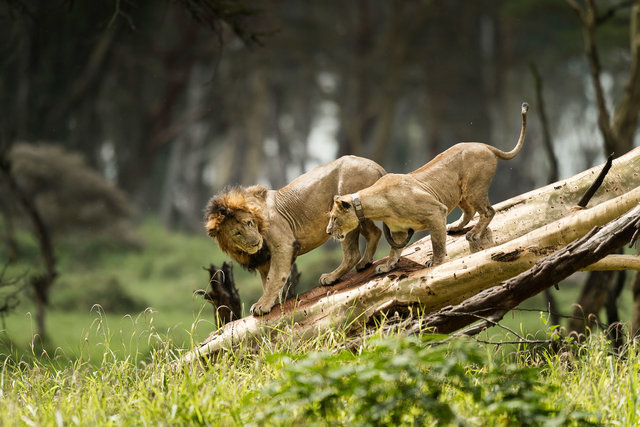
A lioness with a transmitter has amorous feelings for a male, in Lake Nakuru NP the lions climb trees, which may have to do with the large numbers of buffaloes.
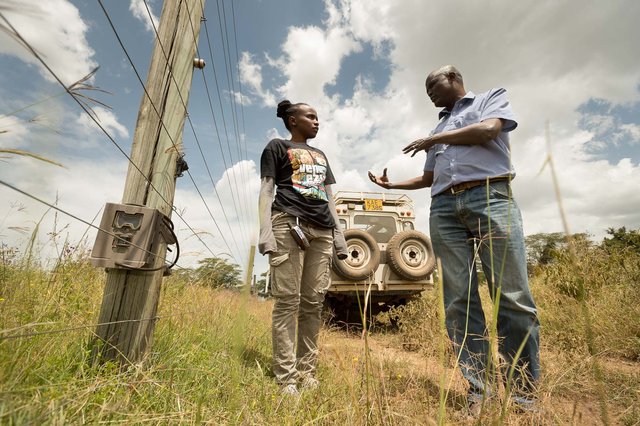
Monica Chege and Fransis Lesilau inspect the fence around Lake Nakuru NP, Warthogs dig under the fences and the lions use it. A camera trap keeps an eye on the fence.
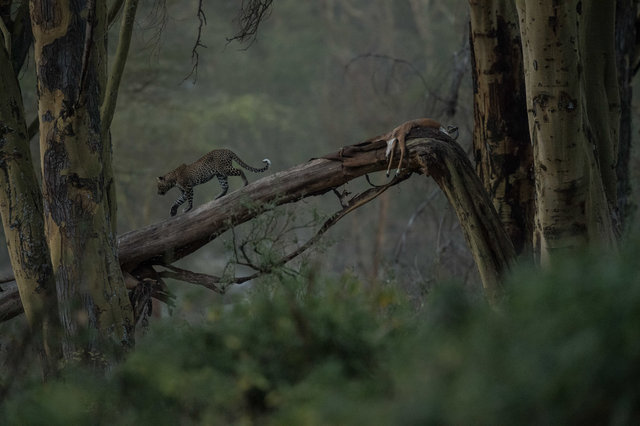
A panther with its prey in Lake Nakuru NP.
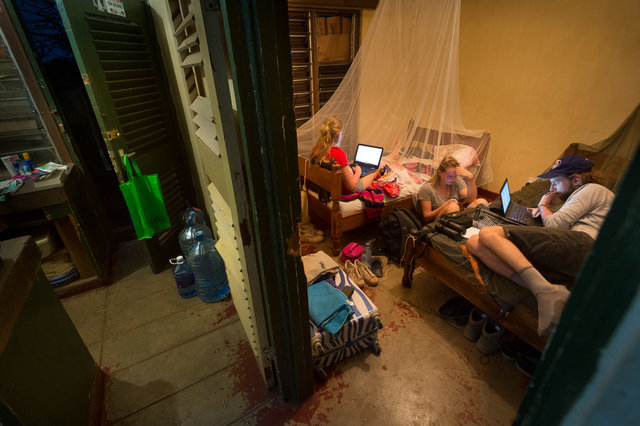
Kevin Groen will accompany the two Leiden biology students Iris Noordermeer and Dionne Jacobs during their first weeks of research in Amboseli National Park.
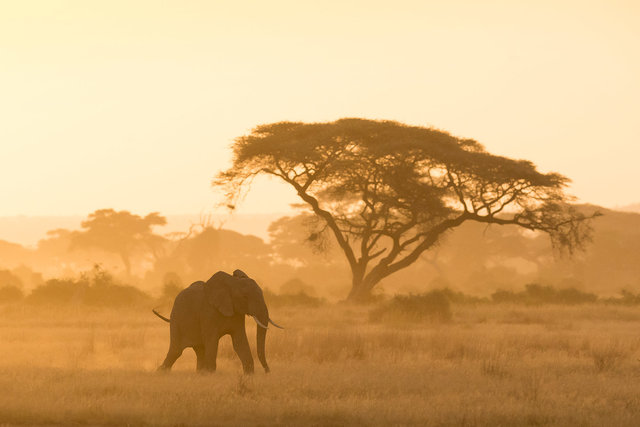
An elephant in the early morning in Amboseli National Park.
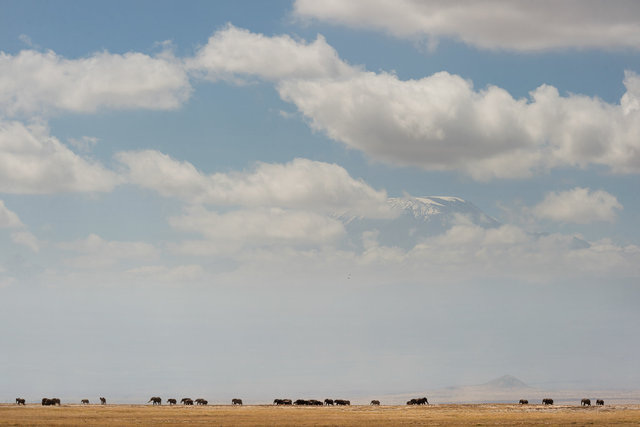
Large herds of elephants walk at a calm pace over the dusty plains towards the cooling swamp. High between the clouds Mount Kilimanjaro.
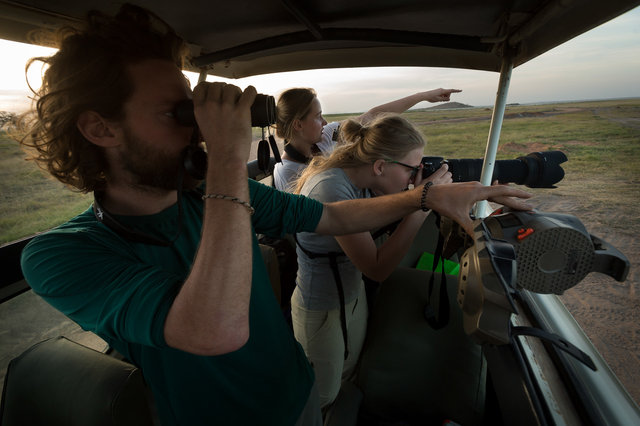
The researchers decide to do a "calling station", with an amplifier the sound of a prey in distress is played.
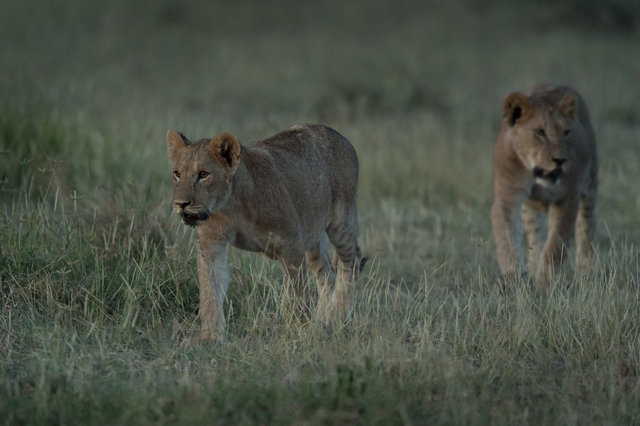
The big pride stands up calmly and starts walking this way.
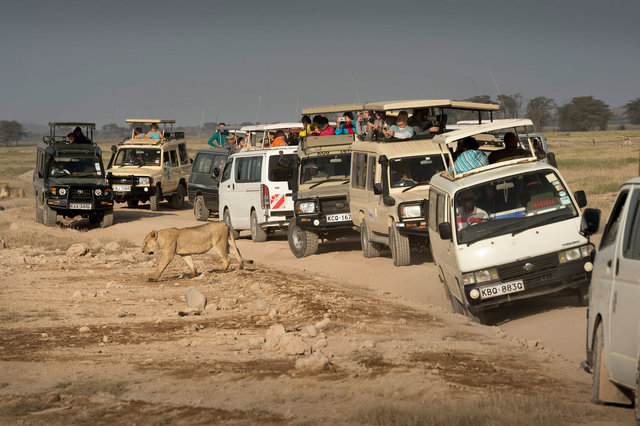
The drivers in the park have radio contact, if something happens the rumor goes fast and within a few minutes there are rows of cars.
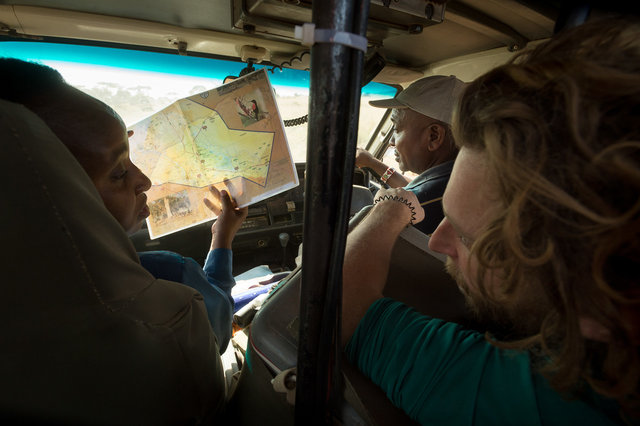
Kevin Groen (right) in cooperation with the driver and scientist of KWS in Amboseli National Park.
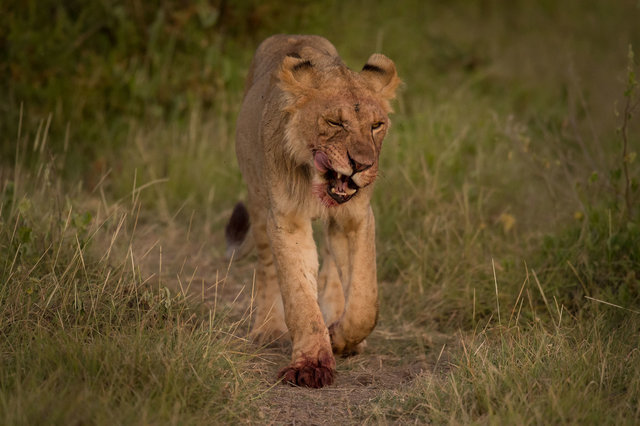
The researchers encounter a kill: a lioness has killed a wildebeest and her young.
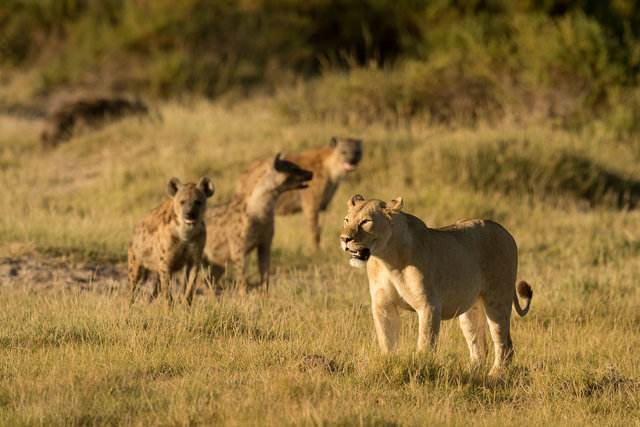
Near the carcass are two jackals and about ten hyenas hanging around.

It is safe to get out of the car, a paw print reveals the presence of lions.
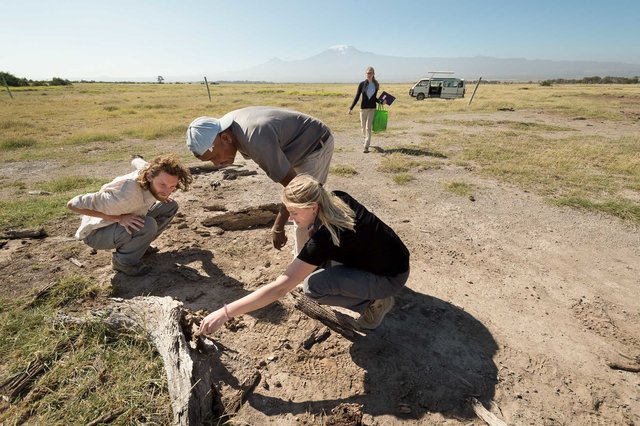
The samples are placed in the ampoules and grip bags, the first one in Amboseli NP, which must be posted on the WhatsApp.
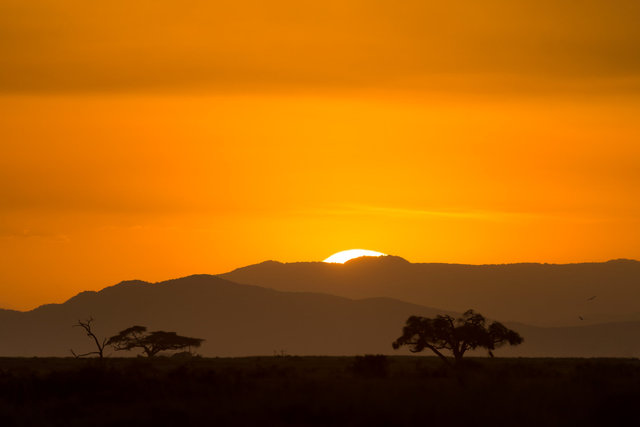
The evening falls over Amboseli National Park.